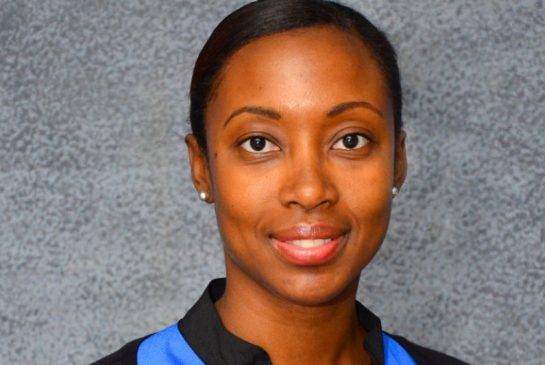First-day jitters decades later
Fitting in with a student body years younger, while getting back into the groove of studying are challenges mature students face
A
A
| Report an Error |
Share via Email

View 2 photos
zoomContributed
Heather Waugh-Gordon


A drive to learn doesn’t fade with age, and neither do those back-to-school jitters. Not even for adults who have been through it all before.
Heather Waugh-Gordon, 35, found herself experiencing some of those familiar pangs of anxiety when she sat down last year for her first lecture at Seneca College, 12 years since she first graduated from college in her native Jamaica with a tourism and hospitality degree.
Surrounded in the Markham campus auditorium by baby-faced peers, Waugh-Gordon felt self-conscious about her age.
“Funnily enough, I didn’t think much about it until that first day of classes,” she recalls.
When another student remarked to her that they appeared to be among the “older” students in class, she asked how old her classmate was.
“She said, ‘I’m like the only 24-year-old here,’ and I thought, ‘Oh geez, I’m a little bit older than you are.’ She has no idea.”
Ontario colleges and universities saw an uptick in enrolment numbers for mature students following the 2008 global recession. In 2009, Seneca saw an 88 per cent increase in students over 41. Mature students now account for about 60 per cent of the student body.
A major incentive was the province’s second career program, which paid up to $28,000 to cover book expenses and tuition for laid-off workers looking to boost their skills by going back to school.
Waugh-Gordon had been working in the hospitality industry in Jamaica since she was 21, but opted to study in Canada so she could gain experience in managing and organizing larger-scale events and meetings.
To overcome her uneasiness during the first few months as a tourism and travel student at Seneca, she started volunteering and becoming part of the campus community through tutoring and part-time work at the school’s recruitment centre. She also served as a student ambassador for helping newcomers through orientation.
“Everyone’s nervous, even the younger kids who are leaving high school. It just comes with the territory [of post-secondary education],” Waugh-Gordon says. “But I would say it’s important to get as much as you can out of this experience. It shouldn’t just be 9-5, and then you go home.”
That’s sound advice, agrees Lily Tsonis, who facilitates mature student info sessions for Seneca newcomers.
“There’s that fear of isolation by younger peers, of not fitting in,” Tsonis said. “Get to know your class, get involved in the college community and it’s a much more seamless transition.”
Flexible learning options can also help adult learners balance work and family obligations with academics by accessing courses in person or online at times that better fit their schedules.
Shy or timid newcomers can participate in communication workshops. Anyone who feels their academic skills are rusty or that their tech know-how isn’t quite up to snuff can also seek out the learning centre for extra help, or get in touch with the counselling centre.
A lack of confidence and a fear of the unknown can be powerful deterrents for students, who must remember their motivation for going back to school in the first place.
“They’re coming back to school for career enhancements and for improving their qualifications. It could be a new direction from a professional standpoint, or it could be about pursuing a path for personal development,” Tsonis says.
Top News
- Updated Cancer risk from processed meat ranks with smoking, says WHO
- Updated Women’s College researcher 'manipulated' study results
- TTC 'too full' to attract expected ridership growth
- Bautista's bat flip could breach TPP copyright changes: critics
- John Baird addresses Tory leadership rumours
- All five dead in B.C. whale-watching boat capsize are Britons
- NEW Ex-MP wants ‘new’ dropped from NDP name
- The Animal Scam: Star Touch exclusive


